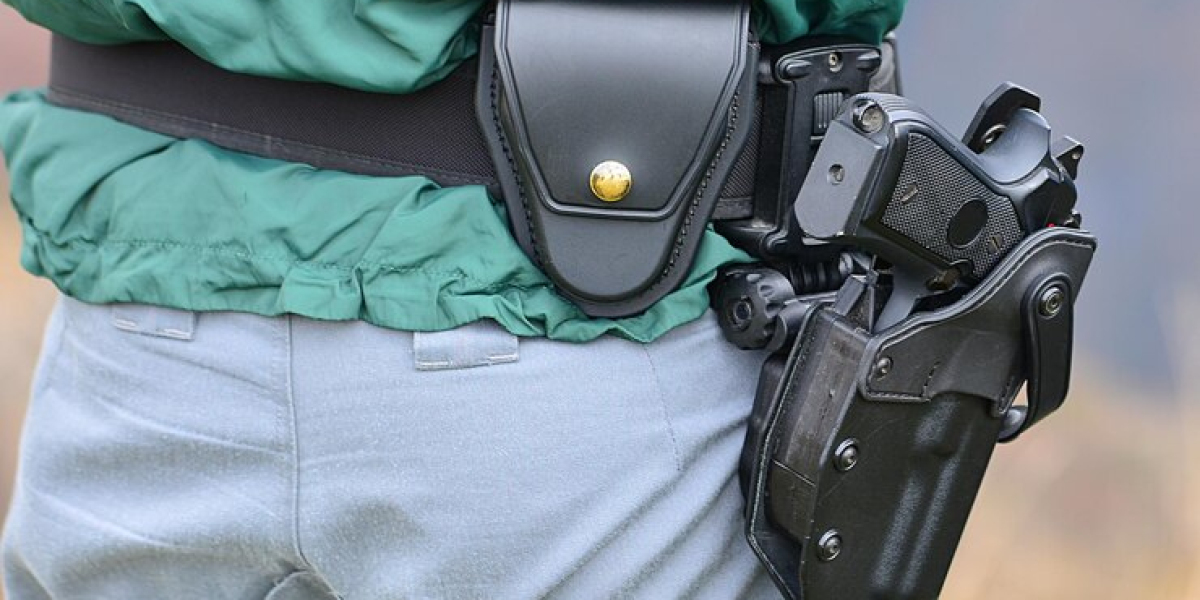Introduction
Whether you’re a law enforcement officer, security personnel, survivalist, or recreational shooter, your gear matters—and so does how you carry it. Among the most vital accessories for any handgun owner is the leg pistol holster. Equally important is the type of handgun or non-lethal defense tool you choose to carry. For those looking for a versatile, realistic option, a gas gun can be a game-changer.
In this comprehensive guide, we’ll dive deep into how to choose the right leg pistol holster for your needs, the benefits and uses of gas guns, and how to integrate both into your tactical gear lineup. We’ll also highlight the key features to look for, safety tips, and where to find top-quality gear in South Africa, including great products available at BNT Online.
Why a Leg Pistol Holster?
A leg holster, often referred to as a drop-leg holster, straps to the thigh and secures a handgun for quick and easy access. But why would someone choose a leg holster over a traditional hip holster?
1. Enhanced Accessibility
In tactical situations, accessing your firearm quickly can be the difference between control and chaos. Leg holsters keep the gun within natural arm's reach, allowing for a smoother draw—especially when seated in a vehicle or crouched in a tactical stance.
2. Gear Compatibility
A thigh-mounted pistol holster keeps your belt free for other essential gear—mag pouches, radios, flashlights, or knives—allowing better load distribution and efficiency in combat or training environments.
3. Improved Comfort
While comfort may vary depending on body type and holster quality, many users report that a well-fitted leg holster reduces the strain on the hips and lower back—especially when worn for long periods.
Key Features to Look for in a Leg Pistol Holster
Not all leg holsters are created equal. When choosing one, pay attention to the following factors:
- Retention System
A quality holster should secure your pistol firmly to prevent it from falling out during movement. Look for adjustable retention levels, thumb breaks, or locking systems that ensure safety without compromising speed.
- Material Quality
Durability is critical. Opt for high-grade polymer, ballistic nylon, or leather construction to withstand wear, environmental conditions, and tactical stress.
- Adjustability and Fit
A good leg holster should offer adjustable straps that accommodate different leg sizes without cutting into your skin or slipping during motion. Padding can further enhance comfort.
- Weapon Compatibility
Ensure the holster matches the size and model of your firearm. Some leg holsters are universal, while others are designed for specific models like Glock, Beretta, or SIG Sauer.
You can explore top-rated leg holsters directly at BNT Online’s Leg Holster Collection.
The Role of Gas Guns in Tactical and Self-Defense Scenarios
If you’re exploring non-lethal self-defense or training tools, gas guns—particularly green gas pistols—offer a reliable and effective option.
What is a Gas Gun?
Gas guns are air-powered replicas that shoot plastic or rubber pellets. They operate on compressed gas (typically green gas, CO2, or propane). These are commonly used for airsoft sports, tactical training, and in some cases, non-lethal deterrence.
Advantages of Using a Gas Gun
Realistic Functionality – Many green gas pistols mimic the weight, slide action, and trigger response of real firearms.
Training Tool – Ideal for beginners to learn safety, handling, and targeting without the risks of live ammunition.
Cost-Effective – Ammo (pellets) and gas refills are cheaper compared to conventional firearms.
Legal Flexibility – In many areas, gas guns have fewer restrictions than live firearms, making them more accessible.
Choosing the Right Gas Gun for Sale
When browsing a gas gun for sale, consider the following:
1. Gas Type Compatibility
Green gas is the most common and user-friendly option. Ensure the pistol you choose is compatible with widely available and safe gas sources.
2. Blowback vs. Non-Blowback
Blowback models simulate real firearm recoil, adding realism. Non-blowback types are more gas-efficient and ideal for target practice.
3. Build and Materials
Choose a gun with a metal slide for realism and durability. Polymer frames are lighter and still sturdy for casual use.
4. Magazine Capacity
Larger magazines mean fewer reloads during training or scenarios. Always consider compatibility with spare magazines.
For a selection of high-quality options, visit BNT Online’s Green Gas Pistols.
Combining Gear: Matching Holster with Gas Gun
If your green gas pistol is a replica of a real firearm like a Glock or Beretta, you’ll likely find compatible leg holsters easily. This combo makes an excellent loadout for airsoft players or security training.
Tips for pairing:
Match the holster model with your gas gun dimensions.
Test retention before field use.
Practice drawing for speed and accuracy while wearing full gear.
Safety Considerations and Legal Aspects
In South Africa:
Green gas pistols are legal but regulated under certain conditions.
Never brandish a gas gun in public—it may be mistaken for a real weapon.
Always store and transport safely in locked cases.
Use eye protection during any form of shooting or training.
For Holster Use:
Secure the holster properly to prevent shifting during movement.
Avoid modifying holsters in ways that could compromise firearm retention.
Regularly inspect straps, buckles, and material for wear and tear.
Where to Buy Leg Holsters and Gas Guns in South Africa
If you're looking for reliable, affordable, and field-tested gear, BNT Online is your one-stop destination. They offer:
A wide range of leg holsters for different tactical needs.
High-performance gas guns and accessories.
Fast shipping across South Africa.
Local customer support and warranty options.
Whether you're upgrading your tactical kit or starting from scratch, BNT Online provides quality gear trusted by professionals and enthusiasts alike.
Conclusion
The right leg pistol holster offers comfort, accessibility, and versatility for tactical users, while a gas gun opens new doors for safe training, airsoft gameplay, and non-lethal defense. By understanding the features, functionality, and safety aspects of both, you can make informed choices that enhance your readiness and performance.
Whether you’re training for duty or enjoying recreational shooting, integrating a reliable holster and gas-powered sidearm into your gear is a strategic investment. Always choose quality, prioritize safety, and purchase from reputable sources like BNT Online.
Frequently Asked Questions (FAQs)
1. Can a leg holster be used for everyday carry?
Leg holsters are best suited for tactical, training, or duty scenarios. For everyday concealed carry, a hip or IWB holster is more practical due to easier concealment.
2. Are gas guns legal in South Africa?
Yes, but they are subject to regulations. You should not carry or display them in public, and always use them responsibly, especially since they closely resemble real firearms.
3. What is green gas made of?
Green gas is typically a mixture of propane and silicone oil, which helps lubricate the gun internally. It’s designed specifically for airsoft and training guns.
4. Do leg holsters fit all pistol models?
Not always. Some are universal and adjustable, while others are model-specific. Always check compatibility before purchase.
5. How do I maintain my gas gun?
Regularly clean the barrel, lubricate the moving parts with silicone oil, and store in a cool, dry place. Avoid leaving gas in the magazine for long periods.
6. Is it safe to use gas guns for self-defense?
Gas guns are primarily for training or airsoft sports. While they may deter an attacker, they are not a substitute for certified non-lethal defense weapons like pepper spray or tasers.








